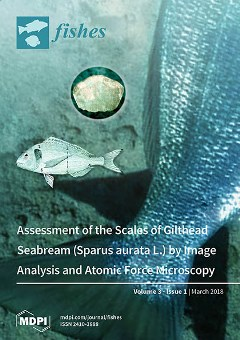Aquatic fern
Azolla pinnata comprises significant high food value with a good proportion of protein, vitamins, and minerals. This study was carried out to examine the effect of fresh
A. pinnata as a substitution of commercial fish feed (CFF) for Thai silver barb
[...] Read more.
Aquatic fern
Azolla pinnata comprises significant high food value with a good proportion of protein, vitamins, and minerals. This study was carried out to examine the effect of fresh
A. pinnata as a substitution of commercial fish feed (CFF) for Thai silver barb
Barbonymus gonionotus. Post fingerlings of
B. gonionotus were reared in five treatments, labeled T
1 to T
5, by substituting 0%, 25%, 50%, 75%, and 100% protein of CFF with
A. pinnata protein (dry matter basis) respectively for 56 days. The specific growth rate, net production rate, protein efficiency ratio, proximate composition, and overall conditions of fish were not significantly varied between the fish reared completely with CFF and 25% substitution with
A. pinnata. However, a significantly higher profit rate (431.49 USD ha
−1 56 day
−1) was calculated for fish reared in T
2 than other treatments. In contrast, there was a significant reduction of growth and other parameters of the fish that were observed in the case where more than 25% CFF was substituted with
A. pinnata. The poorest performance was observed in fish fed completely with
A. pinnata, at T
5. Based on the results, 25% of CFF of Thai silver barb could be substituted with fresh
A. pinnata without significantly lowering their growth and product quality and could contribute significant to a higher profit margin.
Full article





